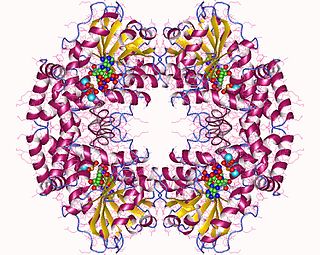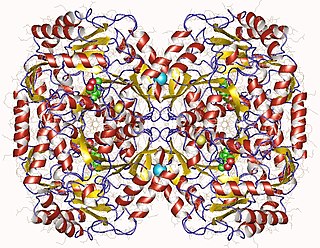| valine-3-methyl-2-oxovalerate transaminase | |||||||||
|---|---|---|---|---|---|---|---|---|---|
| Identifiers | |||||||||
| EC no. | 2.6.1.32 | ||||||||
| CAS no. | 9023-14-7 | ||||||||
| Databases | |||||||||
| IntEnz | IntEnz view | ||||||||
| BRENDA | BRENDA entry | ||||||||
| ExPASy | NiceZyme view | ||||||||
| KEGG | KEGG entry | ||||||||
| MetaCyc | metabolic pathway | ||||||||
| PRIAM | profile | ||||||||
| PDB structures | RCSB PDB PDBe PDBsum | ||||||||
| Gene Ontology | AmiGO / QuickGO | ||||||||
| |||||||||
In enzymology, a valine-3-methyl-2-oxovalerate transaminase (EC 2.6.1.32) is an enzyme that catalyzes the chemical reaction
- L-valine + (S)-3-methyl-2-oxopentanoate 3-methyl-2-oxobutanoate + L-isoleucine
Thus, the two substrates of this enzyme are L-valine and (S)-3-methyl-2-oxopentanoate, whereas its two products are 3-methyl-2-oxobutanoate and L-isoleucine.
This enzyme belongs to the family of transferases, specifically the transaminases, which transfer nitrogenous groups. The systematic name of this enzyme class is L-valine:(S)-3-methyl-2-oxopentanoate aminotransferase. Other names in common use include valine-isoleucine transaminase, valine-3-methyl-2-oxovalerate aminotransferase, alanine-valine transaminase, valine-2-keto-methylvalerate aminotransferase, and valine-isoleucine aminotransferase. [ citation needed ]






